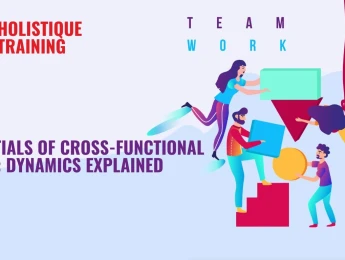- Table of Contents
- Introduction
- What Is a Balanced Scorecard?
- History of the Balanced Scorecard
- Genesis of the Balanced Scorecard
- Recognising the Shortcomings
- Four Perspectives Unveiled
- Evolving Concepts
- Widespread Adoption
- Continuous Refinement
- Legacy and Impact
- How Do You Use a Balanced Scorecard?
- a. Define Vision and Objectives
- b. Identify Key Performance Indicators (KPIs)
- c. Set Targets
- d. Implement Initiatives
- e. Monitor and Measure
- f. Review and Adapt
- Benefits of the Balanced Scorecard
- Enhanced Strategic Alignment
- Improved Decision Making
- Increased Accountability
- Early Warning System
- Focus on Long-Term Success
- Improved Communication and Reporting
- Adaptation to Changing Conditions
- What Are Examples of a Balanced Scorecard?
- a. Financial Perspective:
- b. Customer Perspective:
- c. Internal Process Perspective:
- d. Learning and Growth Perspective:
- What Are Strategic Objectives?
- How Does Using a Balanced Scorecard Lead to Financial Stability?
- a. Holistic Performance Evaluation
- b. Alignment of Objectives
- c. Strategy Execution
- d. Risk Mitigation
- e. Continuous Improvement
- Conclusion
Introduction
Achieving and maintaining financial stability is a top priority for businesses across the globe. In the dynamic and competitive landscape of the modern business world, organisations must navigate through various complexities to ensure their long-term success. Strategic planning and effective performance management play a pivotal role in this endeavour. One approach that has revolutionised the way businesses measure their success is the Balanced Scorecard (BSC). Developed in the early 1990s by Dr. Robert Kaplan and Dr. David Norton, the Balanced Scorecard provides a comprehensive and balanced view of an organisation's performance, going beyond traditional financial metrics. By incorporating both financial and non-financial indicators, the BSC empowers businesses to align their strategies, improve decision-making, enhance accountability, and ultimately pave the way to financial stability. In this blog post, we will delve into the concept of the Balanced Scorecard, explore its historical roots, understand its implementation, and highlight the numerous benefits it offers for achieving financial stability.
What Is a Balanced Scorecard?
The Balanced Scorecard is a strategic management framework developed to help organisations holistically measure and manage their performance. It goes beyond traditional financial metrics by incorporating non-financial indicators to provide a more balanced view of an organisation's health. By focusing on multiple dimensions, including financial, customer, internal processes, and learning and growth perspectives, the Balanced Scorecard helps companies align their strategic objectives with their overall mission.
History of the Balanced Scorecard
The history of the Balanced Scorecard (BSC) is a fascinating journey that begins in the early 1990s when Dr. Robert Kaplan, a Harvard Business School professor, and Dr. David Norton set out to revolutionise the way organisations measure and manage their performance.
Genesis of the Balanced Scorecard
In 1992, Kaplan and Norton published a groundbreaking article titled "The Balanced Scorecard - Measures That Drive Performance" in the Harvard Business Review. This seminal work marked the birth of the Balanced Scorecard concept. At its core, the BSC was conceived as a response to the limitations of traditional performance measurement systems that predominantly relied on financial metrics.
Recognising the Shortcomings
Kaplan and Norton recognised that assessing an organisation's success solely through financial indicators was inadequate. Financial metrics, while crucial, provided a retrospective and often narrow view of an organisation's performance. The dynamic nature of the business environment demanded a more comprehensive approach that took into account non-financial aspects contributing to long-term success.
Four Perspectives Unveiled
The Balanced Scorecard introduced a paradigm shift by incorporating four distinct perspectives to measure organisational performance:
Financial Perspective
This perspective focused on traditional financial metrics like revenue growth, profitability, and return on investment.
Customer Perspective
Recognising the importance of customer satisfaction and loyalty, this perspective aimed to gauge how well the organisation was meeting the needs and expectations of its customers.
Internal Process Perspective
Understanding that efficient internal processes are vital for success, this perspective delved into areas such as cycle time, quality, and productivity.
Learning and Growth Perspective
To ensure long-term success, Kaplan and Norton highlighted the significance of investing in employee training, technological advancements, and knowledge sharing initiatives.
Evolving Concepts
The initial article laid the foundation for the Balanced Scorecard, but its concepts continued to evolve. Kaplan and Norton expanded on their ideas in subsequent publications, refining the framework and providing practical insights on its implementation.
Widespread Adoption
The revolutionary ideas presented in the Harvard Business Review gained traction rapidly. Organisations across industries recognised the potential of the Balanced Scorecard to offer a more balanced and strategic view of their operations. As a result, the BSC became a cornerstone in the field of strategic management.
Continuous Refinement
Over the years, the Balanced Scorecard has not remained static. It has undergone continuous refinement to adapt to the changing business landscape. New perspectives, industry-specific metrics, and technological advancements have been incorporated, ensuring its relevance in an ever-evolving global marketplace.
Legacy and Impact
The Balanced Scorecard's legacy is profound. It has become more than just a performance measurement tool; it is a strategic management framework that empowers organisations to align their activities with their vision and strategy. Its impact goes beyond the boardroom, influencing decision-making processes at all levels of an organisation.
In short, the history of the Balanced Scorecard is a narrative of innovation and adaptation. Kaplan and Norton's groundbreaking ideas have not only stood the test of time but have also evolved to meet the dynamic needs of the business world. The Balanced Scorecard remains a testament to the power of visionary thinking in shaping the way organisations strive for excellence and financial stability in an ever-changing environment.
How Do You Use a Balanced Scorecard?
Implementing the Balanced Scorecard involves a well-defined process, including the following key steps:
a. Define Vision and Objectives
The journey begins by clarifying the organisation's vision and strategic objectives. These objectives should be Specific, Measurable, Achievable, Relevant, and Time-bound (SMART). This initial step sets the foundation for the entire Balanced Scorecard framework, providing a clear roadmap for where the organisation wants to go.
b. Identify Key Performance Indicators (KPIs)
Once the strategic objectives are established, the next step is to identify relevant Key Performance Indicators (KPIs) for each perspective of the Balanced Scorecard. For financial stability, KPIs might include revenue growth, profitability, cash flow, and return on investment (ROI). Selecting appropriate KPIs is critical, as they serve as the benchmarks against which the organisation's performance will be measured.
Table 1: Key Performance Indicators (KPIs) for each perspective
Perspective | KPIs | Descriptions |
Financial | Revenue Growth Rate | Measure of annual financial expansion. |
Financial | Profit Margin | Ratio of profit to total revenue percentage. |
Customer | Customer Satisfaction Score (CSAT) | Quantifies customer contentment with services. |
Customer | Net Promoter Score (NPS) | Indicates customer likelihood to recommend. |
Internal | Cycle Time | Duration for completion of internal processes. |
Internal | Quality Defect Rate | Percentage of products or processes with defects. |
Learning | Employee Training and Development Hours | Hours invested in employee skill enhancement. |
Learning | Technological Advancements | Progress in adopting and applying new technologies. |
c. Set Targets
With the KPIs in place, the organisation needs to set ambitious yet realistic targets for each indicator. These targets should align with the organisation's long-term vision and growth plans. Setting challenging but achievable targets motivates teams and individuals, fostering a proactive approach to performance improvement.
d. Implement Initiatives
Targets are meaningless without a plan to achieve them. This step involves developing action plans and initiatives to reach the established targets. Allocating resources effectively is crucial during this phase, ensuring that the necessary support is provided for the initiatives that will contribute most significantly to achieving the organisation's objectives.
e. Monitor and Measure
Regularly tracking and measuring performance against the set targets is at the core of the Balanced Scorecard process. This involves collecting relevant data and using it to assess progress. Data-driven insights allow for a comprehensive evaluation of performance, helping to identify areas of success and those that require improvement.
f. Review and Adapt
The implementation of the Balanced Scorecard is not a static process. To ensure its continued effectiveness, regular strategy review meetings are essential. These meetings evaluate the performance of the initiatives and allow for adjustments to the Balanced Scorecard as needed. This iterative approach ensures that the organisation remains agile and responsive to changes in the business environment.
By following these steps, organisations can leverage the full potential of the Balanced Scorecard. This structured approach not only helps in achieving short-term goals but also contributes significantly to the long-term financial stability of the organisation. The flexibility embedded in the framework allows for continuous improvement, ensuring that the Balanced Scorecard remains a dynamic and valuable tool in the ever-changing landscape of business.
Benefits of the Balanced Scorecard
Let's now explore the manifold benefits of adopting the Balanced Scorecard, which include enhanced strategic alignment, improved decision-making, increased accountability, a proactive early warning system, and a focus on sustainable growth for achieving financial stability:
Enhanced Strategic Alignment
One of the significant advantages of using the Balanced Scorecard is its ability to enhance strategic alignment within an organisation. By translating the overall mission and vision into specific and measurable objectives for each perspective (financial, customer, internal processes, and learning and growth), the BSC ensures that every department and individual is working cohesively towards common goals. This alignment fosters a sense of shared purpose and helps break down silos, promoting collaboration and cooperation across different functions. When everyone is moving in the same direction, the organisation becomes more efficient, leading to improved financial stability.
Improved Decision Making
Traditional financial metrics alone may not provide a complete picture of a company's performance or its potential to achieve financial stability. The Balanced Scorecard supplements financial indicators with non-financial metrics, giving decision-makers a more comprehensive view of the organisation's health. By considering customer satisfaction, internal process efficiency, and employee development, leaders can make more informed decisions that consider all aspects of the business. This data-driven decision-making enables companies to allocate resources more effectively, invest in initiatives with higher potential for long-term success, and identify areas that require improvement to achieve financial stability.
Increased Accountability
The Balanced Scorecard introduces clarity and specificity into an organisation's strategic objectives by defining key performance indicators (KPIs) and setting measurable targets. This level of detail fosters a culture of accountability throughout the organisation. Employees and teams can see how their individual contributions directly impact the achievement of strategic objectives. As a result, they are more likely to take ownership of their responsibilities and strive to meet or exceed targets, ultimately contributing to improved financial performance and stability.
Early Warning System
Financial stability can be compromised by unforeseen issues or shifts in the business environment. The Balanced Scorecard acts as an early warning system, alerting organisations to potential problems before they escalate. By regularly monitoring performance against established KPIs, management can detect deviations from the strategic plan and take corrective action promptly. This proactive approach allows the company to mitigate risks, prevent financial downturns, and maintain stability even during turbulent times.
Focus on Long-Term Success
Short-term financial gains may not always align with the long-term success and stability of an organisation. The Balanced Scorecard encourages a more balanced approach, emphasising sustainable growth and value creation over time. By including learning and growth perspectives, the BSC prompts businesses to invest in employee training and development, technological advancements, and knowledge sharing initiatives. These investments in human capital and innovation lead to improved operational efficiency and competitiveness, contributing to the organisation's long-term financial stability.
Improved Communication and Reporting
Implementing the Balanced Scorecard often involves regular reporting and communication of performance data throughout the organisation. This transparent approach ensures that everyone is aware of the organisation's progress toward achieving its strategic objectives and financial stability. Transparent reporting also fosters a culture of openness, enabling employees to provide feedback and suggestions for improvement. When employees are engaged and feel valued, they are more likely to contribute positively to the organisation's financial stability.
Adaptation to Changing Conditions
The business environment is dynamic, and organisations must be flexible and adaptable to survive and thrive. The Balanced Scorecard's review and adaptation process allow companies to continuously monitor their performance and adjust their strategies as needed. If market conditions change or new opportunities arise, the BSC provides a framework for incorporating these changes into the strategic plan. By staying agile and responsive, organisations can position themselves for long-term financial stability in an ever-changing landscape.
What Are Examples of a Balanced Scorecard?
While the specific KPIs and objectives on a Balanced Scorecard vary depending on the organisation's nature and industry, here are some generic examples for each perspective:
a. Financial Perspective:
Revenue Growth Rate
Profit Margin
Return on Investment (ROI)
Cash Flow from Operations
Shareholder Value
b. Customer Perspective:
Customer Satisfaction Score (CSAT)
Net Promoter Score(NPS)
Customer Retention Rate
Market Share
Customer Complaint Resolution Time
c. Internal Process Perspective:
Cycle Time
Quality Defect Rate
Employee Productivity
Process Efficiency
Innovation Rate
d. Learning and Growth Perspective:
Employee Training and Development Hours
Employee Engagement Score
Employee Turnover Rate
Technological Advancements
Knowledge Sharing Initiatives
What Are Strategic Objectives?
Strategic objectives are specific, measurable goals that organisations set to achieve their vision and mission. They represent the desired outcomes in each perspective of the Balanced Scorecard. Strategic objectives guide decision-making and resource allocation, ensuring that efforts are aligned with the overall strategy. For instance, a strategic objective for financial stability might be to increase net profit margins by 10% within the next fiscal year.
How Does Using a Balanced Scorecard Lead to Financial Stability?
The Balanced Scorecard plays a vital role in driving financial stability through various mechanisms:
a. Holistic Performance Evaluation
Traditional performance measurement systems often rely heavily on financial metrics, providing a limited and sometimes skewed perspective of an organisation's health. The Balanced Scorecard, however, considers both financial and non-financial indicators, offering a comprehensive view. By evaluating performance across multiple dimensions, including customer satisfaction, internal processes, and learning and growth, the BSC enables organisations to identify and address potential issues that might impact financial stability. This holistic evaluation allows for a more nuanced understanding of the organisation's overall performance.
b. Alignment of Objectives
One of the distinctive features of the Balanced Scorecard is its ability to ensure that every department and individual within the organisation is working towards common strategic objectives. This alignment reduces redundancies and optimises resource utilisation. When every facet of the organisation is moving in sync towards predefined goals, it contributes significantly to financial stability. The removal of silos and the fostering of collaboration enable the organisation to operate more efficiently, leading to improved financial performance.
c. Strategy Execution
The Balanced Scorecard provides a structured approach to strategy execution. It breaks down overarching strategic objectives into actionable initiatives, making it easier to track progress. This alignment between strategic goals and day-to-day activities ensures that efforts are directed towards achieving financial stability. The clarity provided by the BSC enhances the organisation's ability to execute its strategies effectively, minimising the gap between planning and implementation.
d. Risk Mitigation
Financial stability can be compromised by unforeseen issues or shifts in the business environment. The Balanced Scorecard acts as an early warning system, enabling organisations to identify risks promptly and implement mitigating measures. Regular monitoring of performance against established KPIs allows management to detect deviations from the strategic plan. By addressing these deviations proactively, the organisation can mitigate risks, prevent financial downturns, and maintain stability even during turbulent times.
e. Continuous Improvement
The review and adaptation process embedded in the Balanced Scorecard framework foster a culture of continuous improvement. Learning from experiences, both successes and setbacks, becomes an integral part of the organisational culture. This iterative approach leads to increased operational efficiency, enhanced strategic decision-making, and ultimately contributes to long-term financial stability. The ability to adapt and evolve based on insights gained from performance evaluations positions the organisation to thrive in a dynamic business environment.
In essence, the Balanced Scorecard serves as a dynamic management tool that not only measures performance but actively contributes to the organisation's financial stability. By providing a comprehensive view of performance, aligning objectives, facilitating effective strategy execution, mitigating risks, and promoting a culture of continuous improvement, the Balanced Scorecard becomes a linchpin in an organisation's journey towards sustained growth and success. Its holistic approach ensures that financial stability is not just a momentary achievement but a continuous and evolving process.
Conclusion
In conclusion, the Balanced Scorecard is a powerful tool that empowers organisations to achieve financial stability by aligning their strategic objectives with performance measurement. By considering financial and non-financial indicators across different perspectives, the BSC provides a comprehensive view of an organisation's health, enabling data-driven decision-making and effective strategy execution. As businesses face increasing complexities and challenges, the Balanced Scorecard remains a valuable framework for driving sustained growth, stability, and success.
To help you master its implementation and reap its benefits, make sure to enrol in our comprehensive course ‘Using a Balanced Scorecard for Financial Stability.’ Contact us today for more information.
























